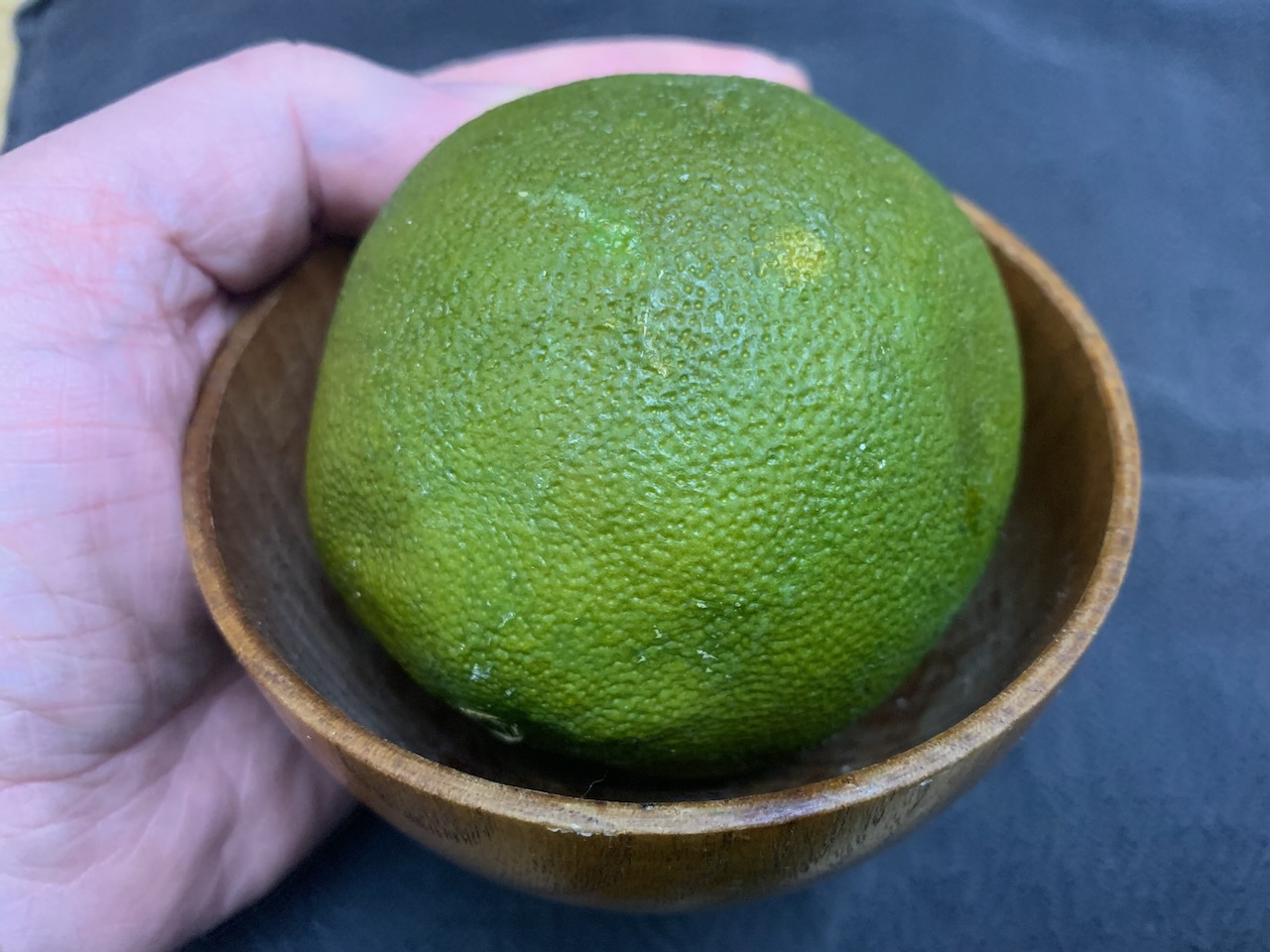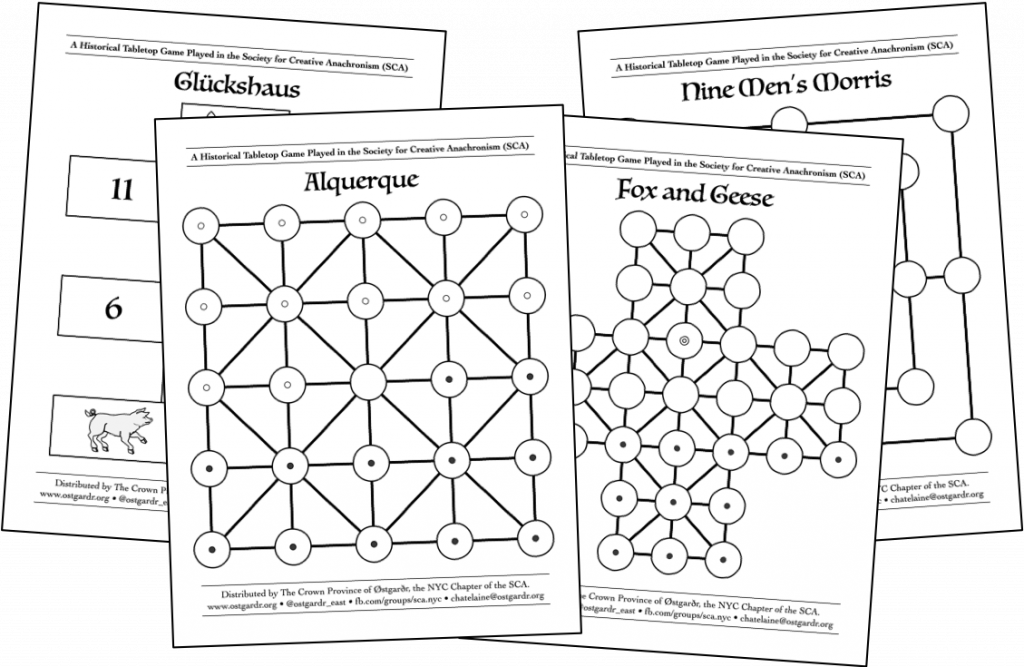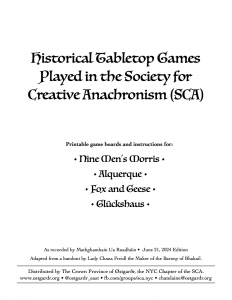At Deck the Halls of Valhalla, I continued to fail at my long-running citrine quest (for previous installments, see 1, 2, 3).
Today’s presentation was a so-called “chocolate orange,” a variety of navel orange which remains bright green when ripe.
Her Excellency Angelica was gracious about it, but looked suitably skeptical, promising to take the offering home and submit it to “the test of the knife.” She later reported that it was “large, firm, citrus, green, but regrettably not even an imperfect lemon,” concluding “His quest continues.”
(His Highness of the East, who happened to be in attendance during court but had not been privy to the backstory of this quest, looked suitably baffled by the entire exchange.)





